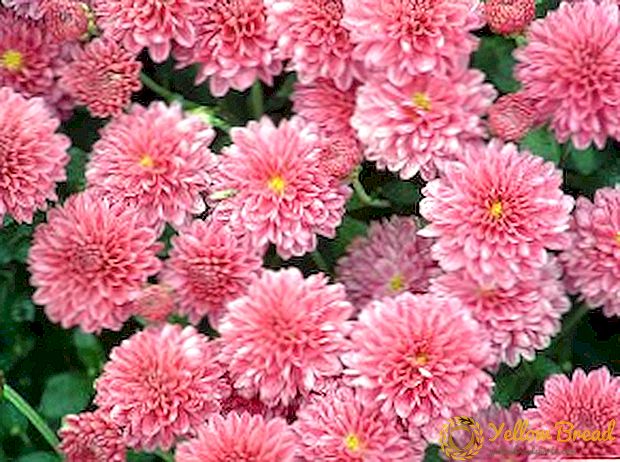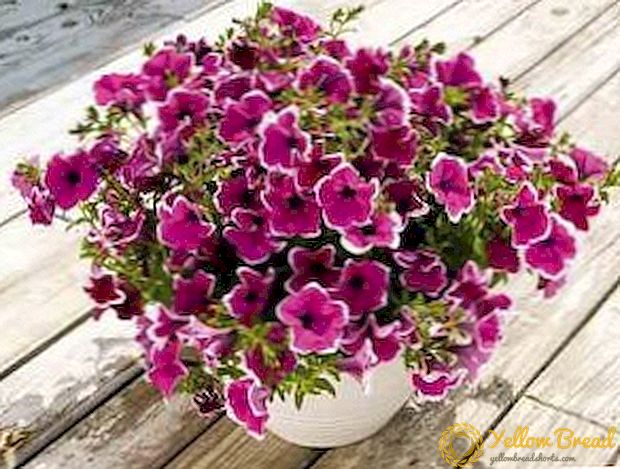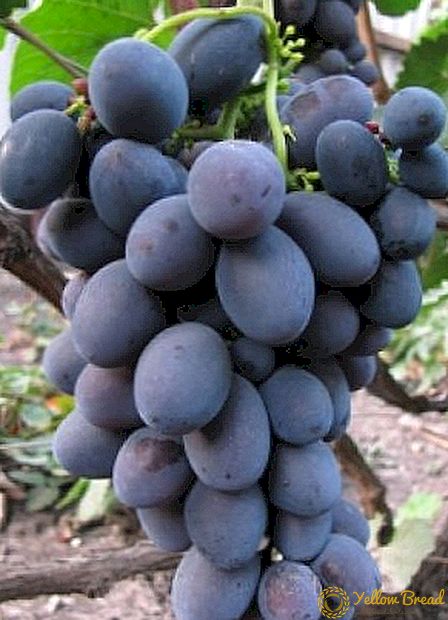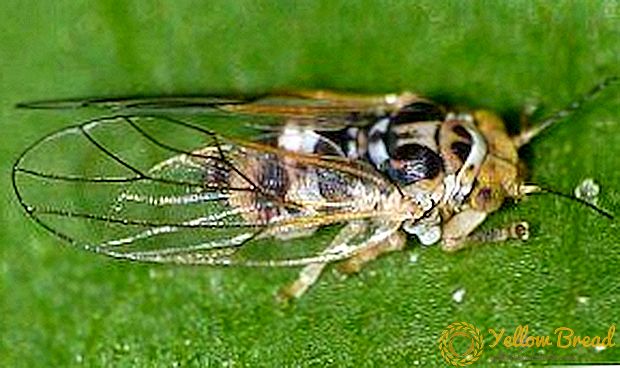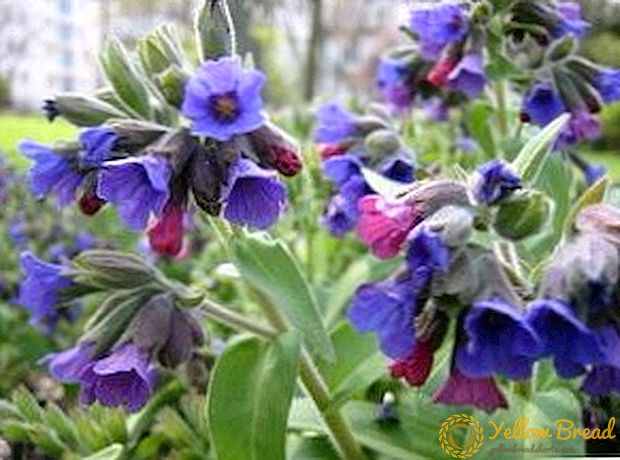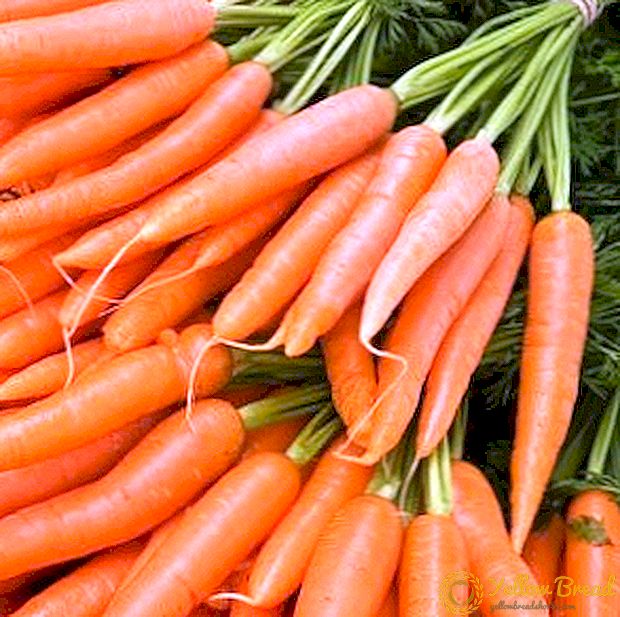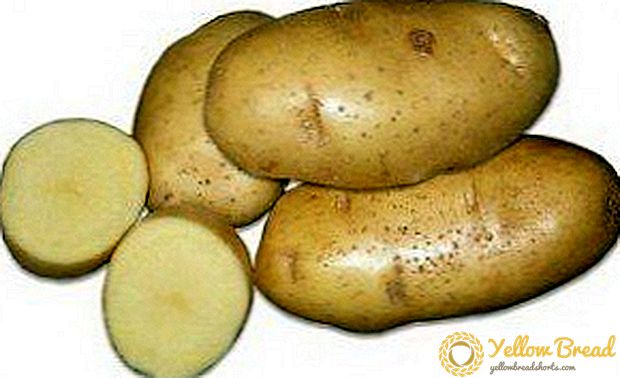
Belarusian potato is considered a true reference.
It is not surprising that new varieties are receiving attention from gardeners and farmers.
These promising new products include "Yanka" - a fruitful, tasty and simple grade in leaving.
Origin
The potato variety Janka is developed by Belarusian breeders. The originator is the Belarusian Center for Vegetable and Plant Growing. The grade is brought in the State registry of the Russian Federation in 2012. Potato zoned for the Central and North-West regions. It is recommended for cultivation on industrial fields and farms, cultivation on personal kitchen gardens is possible. Harvest well stored, suitable for transportation. Smooth, neat tubers are ideal for sale, they can be packaged right on the field.
Potato "Yanka": description of the variety and photos
Yanka - mid-season table variety. Productivity is good, depends on growing conditions and region. From 1 hectare collect from 195 to 315 quintals selected potatoes. The maximum yield is fixed at 360 centners per hectare.
Collected tubers are well kept, keeping quality reaches 96%.
Bush medium-sized, upright, with moderately sprawling branches.
Leaves medium-sized, light green, with slightly wavy edges.
Corolla compact, assembled from large pale purple, rapidly falling flowers.
Berries are rarely tied.
Root system powerful, under each bush is formed 8-12 selected tubers.
Little things and ugly root vegetables a bit.
Potatoes are grown on any soil, bushes tolerate minor droughts or temperature drops. The variety is responsive to top dressing, with the application of complex mineral fertilizers, the yield is significantly increased.
Hilling is necessary with the formation of high ridges and the destruction of weeds. In the conditions of hot summer watering is recommended.
Advantages and disadvantages
 Among the main advantages of the variety:
Among the main advantages of the variety:
- excellent taste of root crops;
- good yield; collected tubers are stored for a long time;
- root vegetables are smooth, beautiful, suitable for sale;
- seed material is not prone to degeneration;
- potatoes are not damaged when digging;
- possible planting on any soil;
- tolerance for the vagaries of weather.
TO minor flaws can be attributed susceptibility to some diseases.
Characteristics of the root
The potato variety "Yanka" has the following characteristics:
- tubers are large, weighing from 80 to 110 g;
- the shape is round oval or oval;
- tubers are smooth, neat;
- peel is yellow, evenly colored, moderately thin, weakly network;
- eyes superficial, few, medium depth, unstained;
- the pulp on the cut is creamy or light yellow;
- starch content is moderate, ranging from 14.8 to 15.4%;
- high content of protein, vitamins, valuable amino acids.
The potato has a pleasant rich flavor. The moderate starch content does not allow the tubers to darken during cutting and cooking, the roots do not boil soft, but become crumbly, not hard. Tubers can be boiled, deep-fried, stuffed, baked. In industrial conditions, potato chips make excellent chips, frozen mixes or sublimated mashed potatoes.
You can get acquainted with the root crop of potatoes "Yanka" in the photo:




Features of growing
Potatoes tolerate any soil, but prefers a light fertile soil. Productivity increases with moderate mineral fertilizer application. Complexes with a high nitrogen content should be avoided, they contribute to the abundant growth of tops to the detriment of tubers.
Landing begins in the second half of Maywhen the soil is completely warm. In warmer regions, plant tubers early.
Before planting, the soil is carefully loosened, plant residues are selected from it that can become a breeding ground for bacteria and insect larvae.For greater safety, the soil can be treated with disinfectants.
Landings need to be changed every three years to avoid infection. It is better to plant potatoes on the land that was occupied by legumes, cabbage, carrots, and meadow grasses.
 Tubers landed with a depth of 10 cm, the distance between the holes - 30-35 cm. Left-row spacing of 70 cm. Humus and wood ash can be decomposed by holes.that increases the nutritional value of the soil.
Tubers landed with a depth of 10 cm, the distance between the holes - 30-35 cm. Left-row spacing of 70 cm. Humus and wood ash can be decomposed by holes.that increases the nutritional value of the soil.
During the planting season 2-3 times spud, forming high ridges above the bushes. Watering is recommended, as well as a single fertilizer application. 10 days before harvesting bushes can be sprayed with an aqueous solution of superphosphate. Foliar fertilization allows you to increase the weight of tubers, not allowing them to accumulate nitrates.
Tubers have a thin, but strong peel, which is not damaged when digging. For industrial cultivation, you can use combines with direct or side grip. Harvested potatoes are sorted and dried in the border or under a canopy. Potatoes for sale can be packed directly on the field.
Diseases and pests
The variety is resistant to many dangerous diseases: potato cancer, golden cyst-forming nematode, common scab, black leg, late blight of the leaf and root crop, banded or wrinkled mosaic.
Recommended treatment of tubers before planting, spilling the soil with disinfectants. For the prevention of late blight, planting is sprayed with copper-containing preparations.
 Industrial insecticides are good for insect pests. They are used against Colorado beetles, aphids, thrips, spider mites, click beetles. It is possible to prevent larval reproduction by destroying weeds or by mulching between rows with mowed grass.
Industrial insecticides are good for insect pests. They are used against Colorado beetles, aphids, thrips, spider mites, click beetles. It is possible to prevent larval reproduction by destroying weeds or by mulching between rows with mowed grass.
In the fight against the Colorado potato beetle will help chemicals: Aktara, Corado, Regent, Commander, Prestige, Lightning, Tanrek, Apache, Taboo.
Potatoes "Yanka" - very promising variety, not prone to degeneration. Bushes do not get sick, tolerate slight weather changes. Potatoes get tasty, it is perfect for culinary experiments. The harvest is stored for a long time, it can be sold even a few months after harvest.

